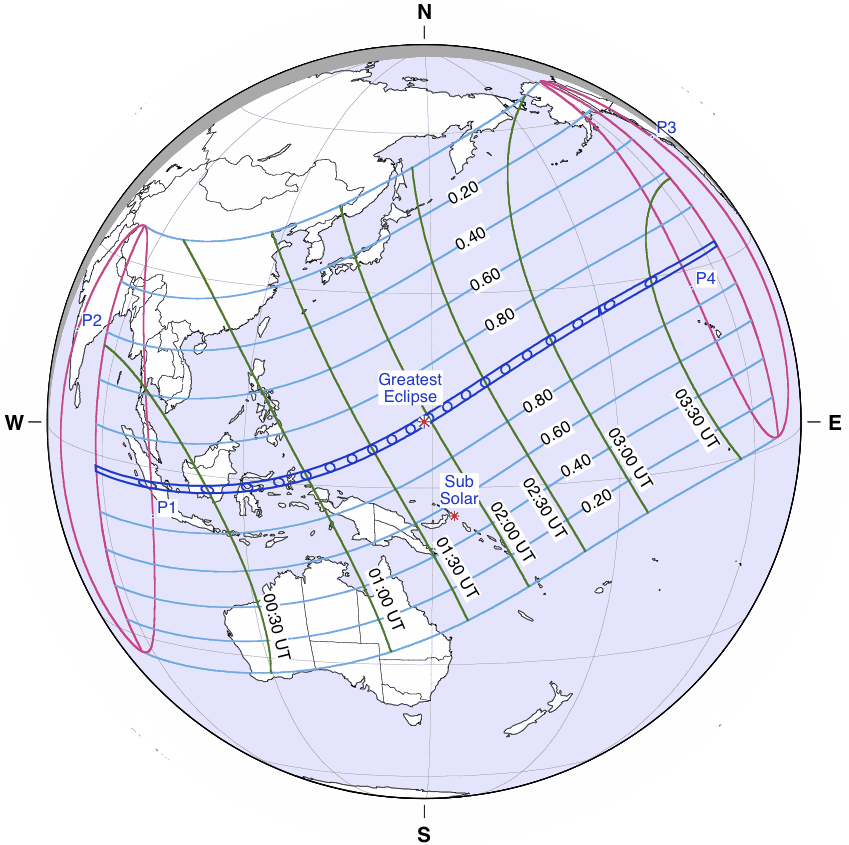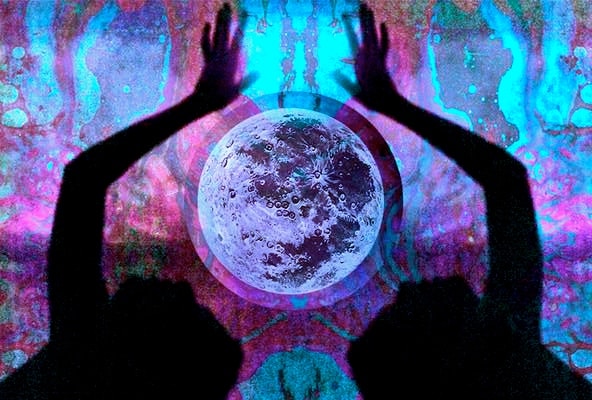
by Somya Devi | Dec 29, 2017 | Astrology, Conjunctions, Eclipses, Events
New Years Full Moon
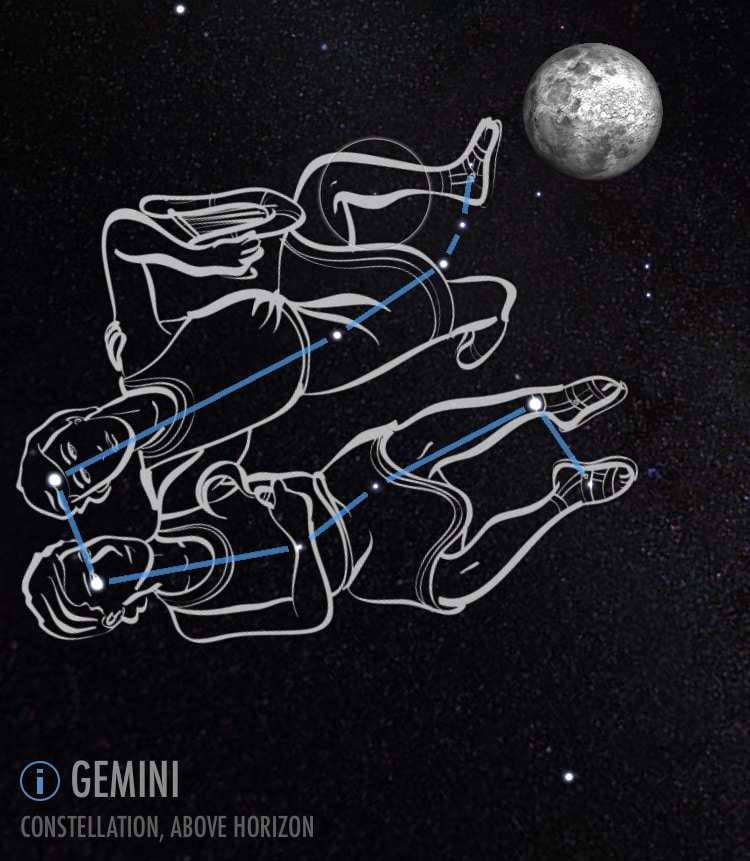 Many blessings for the new year, astrology lovers! This lunar cycle will peak with a full Moon at 17° sidereal Gemini, on January 1st at 6:24 pm PST. On both December 31st and January 1st the Moon will wax into fullness, fully reflecting the light of the Sagittarian Sun onto Earth, as we step into 2018.
Many blessings for the new year, astrology lovers! This lunar cycle will peak with a full Moon at 17° sidereal Gemini, on January 1st at 6:24 pm PST. On both December 31st and January 1st the Moon will wax into fullness, fully reflecting the light of the Sagittarian Sun onto Earth, as we step into 2018.
New Years Challenge: Look at the Sky!
Now I know that some of you are already very familiar with Vedic astrology (jyotish, the science of light) and the sidereal zodiac, but each month I get at least one person commenting or questioning why I would say the full Moon is in Gemini (for example, now), when they’ve heard it is in Cancer.
Well, one can begin to understand this by engaging in the first limb of jyotish, referred to as gola (observational astronomy). The study of astrology began as a love of astronomy, when people would actually go out and look at the sky, watching the way that light bounced off of and around the stars and planets. It wasn’t just about looking at a calendar or computer program to know where the planets are.
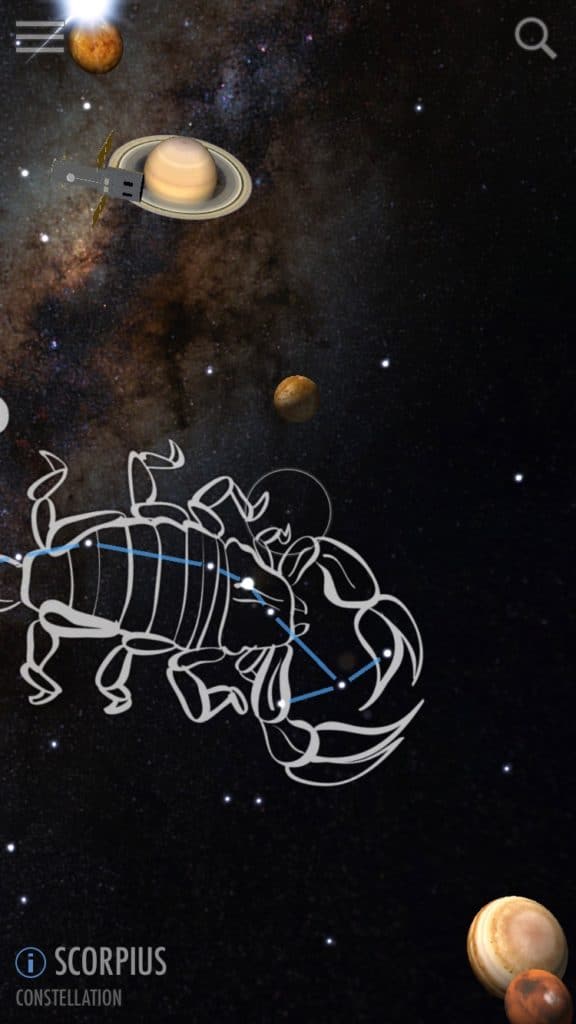 We can still engage in this practice when using the sidereal zodiac with Vedic astrology, because this “star-based” zodiac correlates with what we see in the sky.* Here are some screenshots for January 1st from the astronomy app called SkyView Lite, showing the Moon in sidereal Gemini, and Mars and Jupiter in sidereal Libra, Mercury in sidereal Scorpio, and Saturn, Venus, and the Sun closely joined in sidereal Sagittarius. Gemini is where you will be able to locate the full Moon on January 1st, and these photos show where one would see the other planets if not for the fact that they are currently “up” during the day (early birds might catch Jupiter and Mars).
We can still engage in this practice when using the sidereal zodiac with Vedic astrology, because this “star-based” zodiac correlates with what we see in the sky.* Here are some screenshots for January 1st from the astronomy app called SkyView Lite, showing the Moon in sidereal Gemini, and Mars and Jupiter in sidereal Libra, Mercury in sidereal Scorpio, and Saturn, Venus, and the Sun closely joined in sidereal Sagittarius. Gemini is where you will be able to locate the full Moon on January 1st, and these photos show where one would see the other planets if not for the fact that they are currently “up” during the day (early birds might catch Jupiter and Mars).
Western astrology, following the tropical zodiac (which says this full Moon is in Cancer, and that Saturn is in Capricorn), is a system that is based more on the seasons, than how we see the stars and planets. It has its own applications and relevance, but my articles are written from the Vedic perspective, using the sidereal zodiac, hence… Full Moon in Gemini! Read the full article on the two zodiacs HERE.
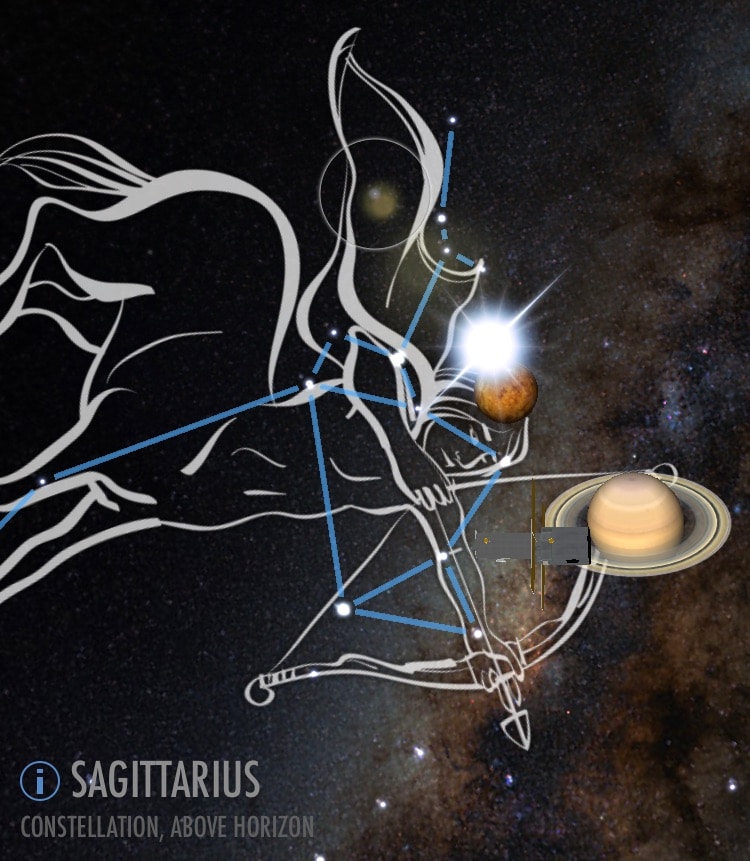
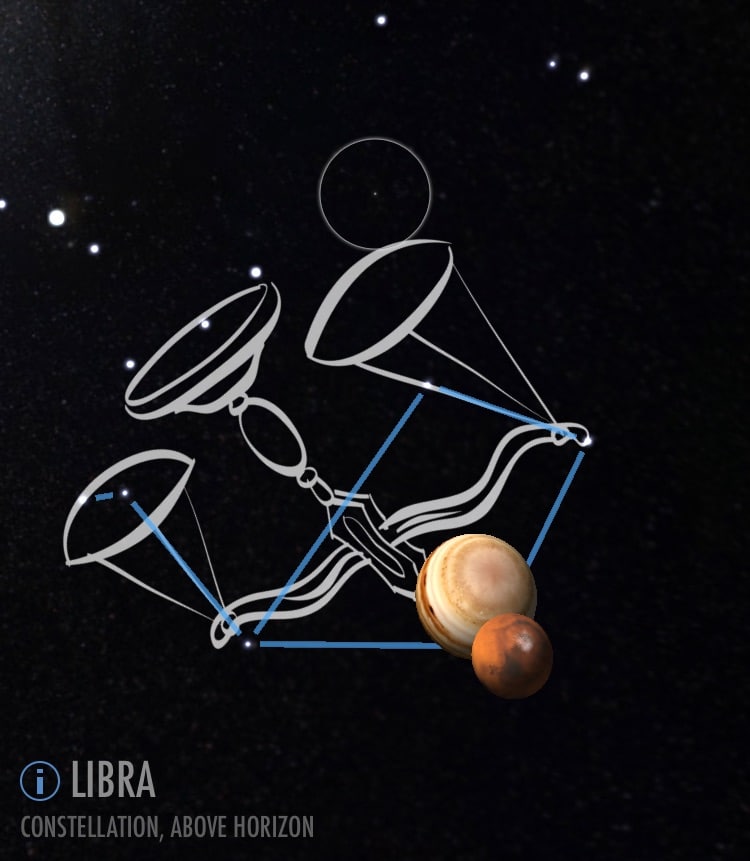
Full Moon in Gemini
So then! What does the full Moon in Gemini mean, as we hurtle through space and into the next calendar year? We began this lunar cycle with the Sun, and Saturn, in Sagittarius. That type of energy compells us to be vigilant with our beliefs and opinions, and to make sure that all of our actions are in close alignment with them. It’s a very passionate and opinionated time of year, as the Sun crosses the Jupiter-ruled sign of righteous action, with stern and serious Saturn casting a strong influence. Saturn’s presence here forces us to look hard at our beliefs, and sort through the dogma to get to the most authentic core.
The full Moon in Gemini, on the other hand, offers a reflection point to all this serious philosophical digging. Gemini is a sign that is much more flexible, impartial, and willing to see both sides of the situation. This doesn’t mean that we cast our guiding principles aside, but it means that we take a moment to stand in the other person’s shoes, play the devil’s advocate, and imagine a world where there’s a synthesis between what we believe is right and the opposite of that, and are willing to engage in conversation around it.
Ardra Nakshatra
Within Gemini, this full Moon falls in the Vedic nakshatra known as Ardra, “the moist one.” This constellation is one of the most violent and stormy places in the zodiac. Its ruled by the deity Rudra, a fierce form of Lord Shiva, and has to do with the destruction and dissolution brought on by storms. After the deluge, however, the earth is moist and fresh and ready for new life to begin. As we reflect on the practicality of our beliefs and the ways we might engage our intellect to relate with and understand our opposites, we can look for ways to break down parts of our rigidity that don’t serve the situation, and let dogma dissolve so that truer sensation may arise.
On the external level, we often see major upheaval or violent events occur in society when Ardra energy is strong. All the more reason to use this New Year celebration to pray, meditate, and envision more light, peace, and positivity spreading across the globe.
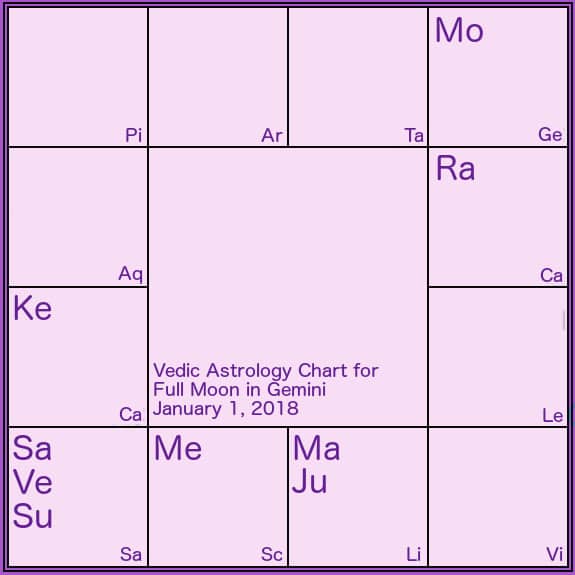
Turbulent Atmosphere
In addition to the full Moon in Ardra, we’re about to enter the last major Kala Sarpa (“black snake”) period for a while, as all the planets traverse one side of the Rahu-Ketu nodal axis (from January 2nd – 19th). There will be one more partial cycle after that, from January 31st through February 5th, when Venus finally passes out of Capricorn (where Ketu lies), breaking the potential for any more Kala Sarpa cycles til August. During these periods, life can feel extra intense, and whatever karma is already stimulated in your life by the transits (in relation to your natal chart), will be magnified.
On top of that, we’re entering another eclipse cycle, as we approach two eclipses to occur on January 31st and February 15th. The total lunar eclipse on the 31st will be visible from Asia, Australia, India, the Pacific, and western North America. The partial solar eclipse on the 15th will only be visible from Antarctica and southern South America. Though there may be slightly less intensity in places where the eclipses aren’t visible, they nevertheless tend to stir up shadow work we are doing in a particular area of life (read your forecast in the free e-book available here).
Finally, we’ll be underneath a planetary war between Jupiter and Mars from the 4th through the 8th, so be aware of your animal instinct fighting with your higher beliefs. There may also be conflict between some specific areas of life, relative to your natal chart.
May you start the new year full of planetary inspiration, gazing upon the full Moon in Gemini!
Book a personal 2018 Vedic Astrology Reading with me now! Sessions done by phone or Skype.
*Save for a few cases when the observable constellation spans more or less than its 30° attributed “portion” of the ecliptic.
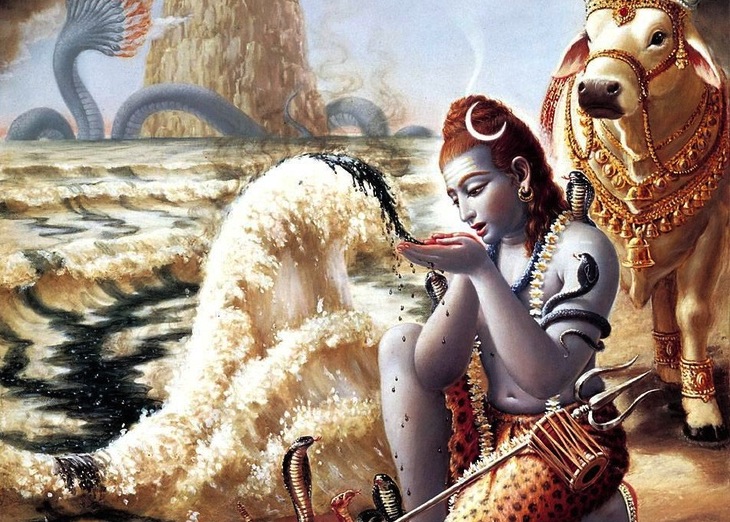
by Somya Devi | Feb 22, 2017 | Astrology, Conjunctions, Eclipses, Events, Holy Days
Healing Eclipse on the New Moon + Maha Shivaratri
Sunday begins the New Moon cycle and brings with it a powerful eclipse whose alignment offers some deep healing opportunities. The annular solar eclipse will be visible from much of Africa, South America, and Antarctica, and will coincide with the exact time of the darkest Moon phase at 6:58 a.m PST (14:58 UTC) on Sunday, February 26th. This eclipse occurs with the Sun, Moon, Mercury, and Ketu all in sidereal Aquarius within the Vedic nakshatra of Shatabisha.
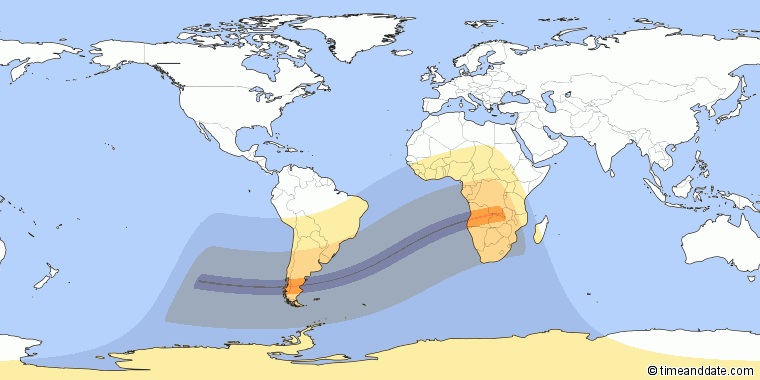
Aquarius
Aquarius is a sign ruled by Saturn, and it is where we remember something greater than ourselves. It is where we become inspired towards universal service, and to offering effort into society and for the greater good. Saturn, the planet of pressure and time, is aspecting the planets of this eclipse from his recent seat in sidereal Sagittarius, compelling us even more deeply to stand up for our principles and beliefs, and commit ourselves to these through hard work.
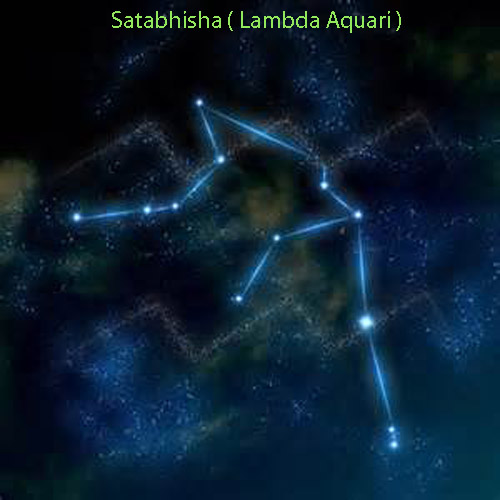
Shatabisha
Shatabisha is the Vedic nakshatra that most elicits the concept of healing. It is the star of the “100 physicians” or the “100 medicines,” and is ruled by Varuna, the deity of the cosmic waters. With many planets under the influence of this star, we are strongly called towards our journey of self-healing, trying many different medicines and healing techniques to get there. Having Ketu here, eclipsing the Sun and the Moon, presents the opportunity to go deeply into our subconscious blockages and find release from past karma and trauma.
The Greater Eclipse Cycle
This is the third solar eclipse that has occurred since Rahu and Ketu transited into the Leo-Aquarius axis in January of 2016 (download the Free E-Book and Forecast by Sign for this transit if you haven’t yet!). Throughout this time, we have experienced shadows and blockages coming up around the themes of the Leo-Aquarius axis. On a broad scale, this relates to the balance of personal power and universal service that we play out through society. On an individual level, it has raised questions around the house-themes of Leo and Aquarius in the personal Vedic birth chart.
We have been uncovering layers of our own karma through this time, and discovering where change is needed in our lives–either through a change in our actions or a change in our thoughts. Our personal challenges become most apparent during the eclipse windows, which have occurred this month, as well as during August and March of 2016. Though these windows can be difficult times, the power of the lunar nodes helps us to see where we are stuck. With self-awareness and observation it becomes less difficult, but when we are not paying attention or are clinging to our own attachments, the eclipses can feel like they are wreaking havoc on our lives.
Since this is the third and final pair of eclipses during this transit of Rahu and Ketu, it is a time for really reaching some clarity around the lessons being brought up over the last year-and-a-half. Eclipses do cause confusion and are inauspicious in general, but as we do the work of self-inquiry and practice astute awareness, we can gain insight and more light after going into the darkness of their shadows. The healing power behind Shatabisha nakshatra may present us with some different medicines, or practices, to assist in our evolutionary process, assisting us in learning how to flow better with the cosmic waters.
Shivaratri
In addition to the healing energy of this nakshatra, we are receiving the powerful gift of deep meditation offered by the Shivaratri holiday. Maha Shivaratri (or Sivaratri) is “the great night of Lord Shiva,” celebrated in India and around the world each year on the 14th night of the waning Moon this month. This year it falls on the night of Friday, February 24th into Saturday the 25th, around the world (except for mid-Australia/Japan and Eastward, where it falls on the 25th/26th).
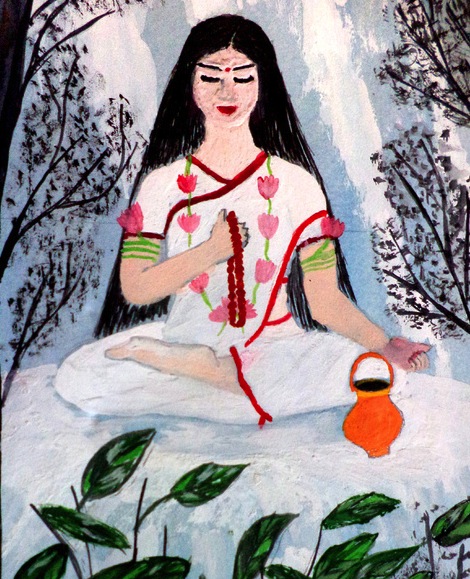 On Shivaratri, it is a common practice to stay up the whole night in meditation, fasting and praying. This commemorates the sacrifice made by Lord Shiva when he kept the poison that arose from the milk ocean in his throat in order to protect the entire creation. In this story, his wife Parvati held his throat to keep him from consuming the poison, and thus this holiday also commemorates the union of masculine and feminine forces, Shakti and Shiva, yin and yang. In many places this is represented by a celebration of Shiva and Parvati’s wedding, and one may see large statues of the two paraded about town and worshiped.
On Shivaratri, it is a common practice to stay up the whole night in meditation, fasting and praying. This commemorates the sacrifice made by Lord Shiva when he kept the poison that arose from the milk ocean in his throat in order to protect the entire creation. In this story, his wife Parvati held his throat to keep him from consuming the poison, and thus this holiday also commemorates the union of masculine and feminine forces, Shakti and Shiva, yin and yang. In many places this is represented by a celebration of Shiva and Parvati’s wedding, and one may see large statues of the two paraded about town and worshiped.
Shiva and Parvati represent the path towards awakening consciousness through the ascetic side of yoga, and the practices of tapas and renunciation. By renouncing food and sleep for one night, particularly on the night of Shivaratri, we can gain some of the benefit of the austerities that these two performed for aeons. Tapas, or austerities, are yogic practices of undergoing difficult situations in order to gain more patience, as well as deeper understanding that we are in fact the eternal soul and not the body-mind with which we normally identify.
On this Shivaratri, as we approach the transformative energy of the eclipse in Shatabisha, the opportunity for overcoming the challenges and shadows of our minds is great. The power of group meditation occurring all over the world also contributes to this. With the energy of Aquarius behind us, let us offer the fruits of our practice towards the peace and happiness of all beings on earth, and spread the benefit for the greater good.
Mantras for Maha Shivaratri:
Om Namah Shivaya (the panchakshari mantra – “I bow down to infinite consciousness”)
Tyagenaike Amrtatvamanashuhu (by renunciation alone, immortality is gained)
Personal chart readings are available to delve deeper into the meaning of this eclipse cycle in your life.
Did you like Healing Eclipse on the New Moon, following Maha Shivaratri? Please Like, Comment, and Share!
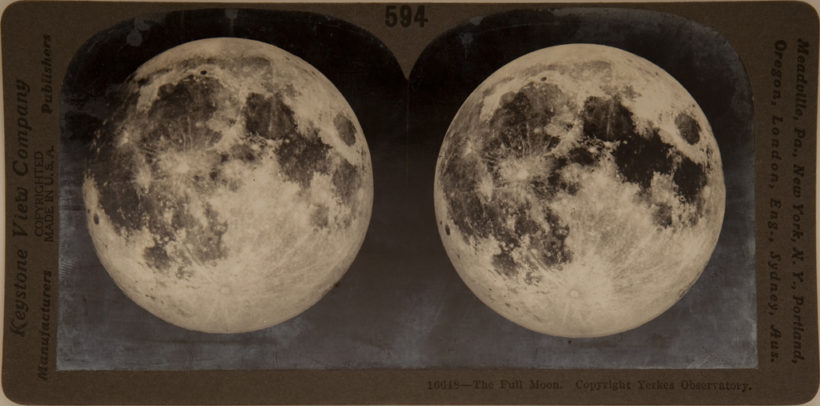
by Somya Devi | Jan 11, 2017 | Astrology, Conjunctions, Eclipses, Holy Days, Planets Changing Signs, Retrograde
Gemini Full Moon Offers a Fresh Start
The full Moon occurs in sidereal Gemini tonight! The exact full Moon time is 6:34 am EST on January 12th. This full Moon falls in the Vedic nakshatra of Punarvasu, a constellation of renewal. Meaning “good again,” or “more light,” this is a great nakshatra to connect with as we begin the new year. This star-sign comes after the stormy and turbulent nakshatra of Ardra, and represents the calm after the storm. Many people experienced 2016 as especially turbulent (and many astrological alignments contributed to that!). Now is is an excellent time to be reminded of the rebirth that can come after chaotic times.
Punarvasu can be identified in sidereal Gemini, around the stars Castor and Pollux. The preceding constellation, Ardra, is ruled by Rudra, a fierce form of Shiva. He reminds us of the destructive powers of nature, and challenges us to find peace and consciousness amidst turmoil. Punarvasu comes after Ardra, and signifies the return of light. During this time of year we begin to feel the light of the Sun returning after the December solstice, as the seasons begin to wax in the northern hemisphere. The deity for this nakshatra is Aditi, a fertile mother-goddess. After the rains, the ground becomes moist, lush and ready for new life to begin its journey upward.
What have the intense rains of winter watered in your life? What has been destroyed by them, creating space for something new to be planted? Where have you nourished the grounds thus far, and what do you desire to grow this year? Now is a time to rise up and connect with your intentions, offering your vision forward and finding the light after the wreckage. The Gemini full Moon offers a fresh start. This is fitting as it coincides with the start of the New Year, and also with Makara Sankranti (January 14th), a Hindu holiday celebrating the return of the light when the Sun enters sidereal Capricorn.
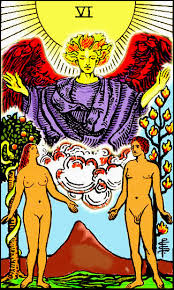 Both Gemini and Punarvasu are strongly dual in nature, enabling us to see both sides of a situation. In Western lore, the twins, Castor and Pollux are found here. In Vedic mythology, Gemini is called Mithuna, “the pair.” The two figures were seen in Vedic times as a male and a female, representing the yin and yang aspects of existence, and the dance between the two.
Both Gemini and Punarvasu are strongly dual in nature, enabling us to see both sides of a situation. In Western lore, the twins, Castor and Pollux are found here. In Vedic mythology, Gemini is called Mithuna, “the pair.” The two figures were seen in Vedic times as a male and a female, representing the yin and yang aspects of existence, and the dance between the two.
Gemini reminds us to be open, curious, and playful. The full Moon here offers a contrast to the strongly opinionated and purposeful energy of Sagittarius, where we began this cycle. Under a Sagittarian influence, we move and act closely in alignment with our beliefs. This can sometimes lead us in the right direction, but sometimes can lead us into dogmatism or over-zealousness. Gemini reminds us to remain flexible, and allows us to change directions if we want. The light of the full Moon here illuminates the amenable and resilient side of ourselves, and aids us in going with the flow and adapting to life’s circumstance. This lunar cycle teaches us to move with purpose, while at the same time reminds us of the need to stay open.
The energy of this month may be very tough on relationships, as we’ve had Venus, Mars, and Ketu joining together in Aquarius for the last couple of weeks. All three remain here for another week more to come, and Venus and Ketu stay joined through the 27th. Ketu with Venus brings up doubts and shadows around relationships, while Mars adds a level of passion and intensity that can result in arguing or fighting. Ketu also has the potential to break things and set us free from the past. If you’ve been trying to move forward from something or someone, this could be the time. If you’re trying to hold something together, be aware of the added challenge that is coming from this alignment. With these planets in Aquarius, work on aligning your relationships, pursuit of happiness, and actions with your highest goals. Service to society or a greater cause will help you to work with these energies now.
We’re nearing another eclipse cycle, with the nodes eclipsing the Moon and Sun (partially) on February 10th and 26th. This is the last full eclipse cycle with the nodes on the Leo-Aquarius axis. If you never read the report for your sign about this, download the free e-book now. The coming eclipse cycle is a final time to get a really good glimpse of our shadows around power and service, and particularly in relation to the house-axis aligned with Leo and Aquarius in your Vedic chart. If there are lessons you’ve been trying to ignore for the past year, don’t pass up this opportunity to pay attention to them and make some changes in your life, whether internal or external.
At the end of the month, on January 26th, Saturn will enter Sagittarius for the first time, after a 2.5-year transit through Scorpio. This will bring big changes in where and how we approach our long-term goals, and where we feel acute pressures in life. Then on the 27th, Venus will transit into Pisces, where he’ll remain exalted for four full months, including a 6-week period in retrograde motion. This has major impact potential for relationships and how we approach happiness in general. Stay updated to get the upcoming forecasts for your sign on both of these major transits!
Personal 2017 Readings are now available, as well as Eclipse Readings. If you’ve had a reading from me previously you can order the full session or a 30-minute session for either or both of these. Happy New Year!
Save
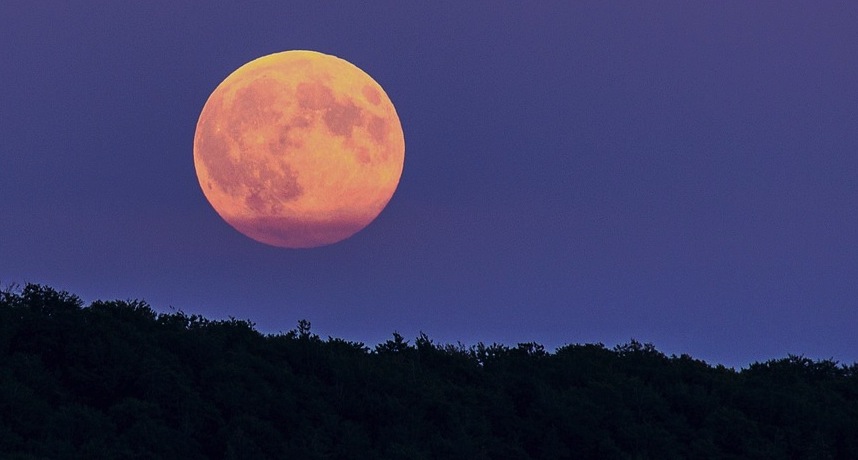
by Somya Devi | Sep 12, 2016 | Astrology, Conjunctions, Eclipses, Planets Changing Signs, Retrograde
It feels like just yesterday that I was writing last year’s article on the Harvest Moon, reflecting on the contracting sensation beginning to feel tangible in nature, as we slowly move from summer into fall and towards winter. For the last week or so, I’ve been pleasantly aware of the slight briskness in the air and the energetic shifts taking place as we move from the multi-directional activity of summer to the more focused and quiet happenings of autumn and winter. (As a natural introvert, I am actually loving the change and excited to feel the atmosphere settling down around me!) I’m definitely feeling ready for the Harvest Moon and lunar eclipse of September 16th.
Harvest Moon
The Harvest Moon is the Full Moon that occurs closest to the autumn equinox (September 22nd), and brings with it a few nights of very bright moonlight under which farmers are able to harvest their crops. (The Moon normally rises about one hour later each night, but for this week he will rise only half-an-hour later per day, giving much brighter evenings.) This is also a time where we energetically begin to harvest that which has come from our efforts put forth throughout the year, as we move into a more inward period for the darker months (in the northern hemisphere). It is also a potent moment to offer our prayers and to harvest the bounty of growth that comes with our own self-effort in shadow work.
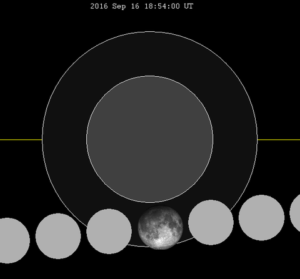 What is particularly unique is that this Harvest Moon, like last year’s, is also accompanied by a lunar eclipse. The Moon reaches its peak fullness at 12:05pm PDT on Friday, September 16th, and the penumbral lunar eclipse will also occur around this time (at 18:54 UT), but will only be visible from the other side of the world. This eclipse won’t be as spectacular as last year’s Blood Moon, but folks in that area of the world will get to see a slight shadow as the Moon passes through the outer edge of the earth’s shadow.
What is particularly unique is that this Harvest Moon, like last year’s, is also accompanied by a lunar eclipse. The Moon reaches its peak fullness at 12:05pm PDT on Friday, September 16th, and the penumbral lunar eclipse will also occur around this time (at 18:54 UT), but will only be visible from the other side of the world. This eclipse won’t be as spectacular as last year’s Blood Moon, but folks in that area of the world will get to see a slight shadow as the Moon passes through the outer edge of the earth’s shadow.
Lunar Eclipse in Pisces in Purva Bhadrapada
The Sun and the Moon will be at just 0°14′ of Virgo and Pisces, respectively. With the nodes still in Leo and Aquarius, and the Moon not fully established in either Aquarius or Pisces, this is a great time to examine the energy of the Full Moon’s nakshatra, Purva Bhadrapada, as an indicator of this eclipse’s energy. Purva Bhadrapada is a nakshatra (star-group) that bridges the two major constellations, from 20°00′ of Aquarius to 3°20′ of Pisces. This star-sign brings a strong energy of purification, which will help us to harness the already transformative power of the eclipse.
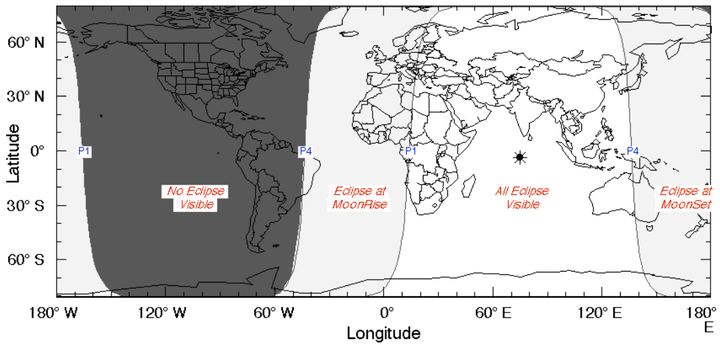 As we move with the Moon from the end of Aquarius to the beginning of Pisces in Purva Bhadrapada, we are in the place where we must let go of worldly activity, service, and socializing and into a place of solitude (meditation, sleep, and, ultimately, death and liberation). Pisces is the last stop on the train of this life, and this nakshatra represents the point in time where we must begin to face the fact that there is a last stop. It is a place where we can begin to embrace detachment, from all our worldly gains, relations, and activities, and connect with the subtler realms of being and spirit.
As we move with the Moon from the end of Aquarius to the beginning of Pisces in Purva Bhadrapada, we are in the place where we must let go of worldly activity, service, and socializing and into a place of solitude (meditation, sleep, and, ultimately, death and liberation). Pisces is the last stop on the train of this life, and this nakshatra represents the point in time where we must begin to face the fact that there is a last stop. It is a place where we can begin to embrace detachment, from all our worldly gains, relations, and activities, and connect with the subtler realms of being and spirit.
Accompanied by the energy of Ketu, this Full Moon Lunar Eclipse offers us a powerful chance to cut cords and free ourselves from unnecessary attachments… especially attachments to our own desires and illusions of control. This lunar cycle began with a Solar Eclipse in Leo. With the lustful Rahu in Leo since January, we have been ravenously driven to find and harness a sense of power and control in this uncontrollable world (especially in the area of life shown by Leo in your chart). The Solar Eclipse on September 1st revealed our shadows around this effort, and the illusory nature of power and control. This Full Moon helps us to reflect on and balance that energy, and offers the capacities for transformation and purification towards this process.
 Since the Moon is technically just over the boundary into Pisces, this is an 8th-house Full Moon (8th house from where the New Moon occurred), which always adds a reshaping and mystical quality to the energy at hand. Purva Bhadrapada itself brings on energies for purification and transformation, as it leads us from the material world into the ethereal. Furthermore, the deity for this nakshatra is Aja Ekapada, “the one-footed goat,” who is related to Rudra, a destructive form of Shiva. The destructive nature of Shiva is that which allows us to destroy one thing in order for that energy to transform, rise again, and grow into its new phase of evolution. He also offers us the power to destroy illusion and attachment, which is a good tool to have at hand at the time of an eclipse.
Since the Moon is technically just over the boundary into Pisces, this is an 8th-house Full Moon (8th house from where the New Moon occurred), which always adds a reshaping and mystical quality to the energy at hand. Purva Bhadrapada itself brings on energies for purification and transformation, as it leads us from the material world into the ethereal. Furthermore, the deity for this nakshatra is Aja Ekapada, “the one-footed goat,” who is related to Rudra, a destructive form of Shiva. The destructive nature of Shiva is that which allows us to destroy one thing in order for that energy to transform, rise again, and grow into its new phase of evolution. He also offers us the power to destroy illusion and attachment, which is a good tool to have at hand at the time of an eclipse.
We have been doing a lot of inner work this year around the themes of Leo and Aquarius, finding and embracing personal power and self-love, and balancing that with universal service and love for all beings. This eclipse gives us a chance to step back and feel a little more detachment on both sides of that axis, diving back into the deep well of Pisces where all energy flows together back into source. This may be a much-needed perspective given the zealous fervor brought on by the Jupiter-Rahu conjunction this year (January through August), and the heated pressure brought on by the Saturn-Mars conjunction (March through next week).
If you need a break from all of the astrological intensity being handed out this year, I think this is your chance. Shadows do arise during the eclipses, but the more dedicated we are to looking at them and being willing to make and allow change in ourselves, the better off we are after they pass. As the the Full Moon heads into Pisces on this lunar eclipse, allow yourself to surrender to the flow and trust in source. This is the lesson being offered that will help free you from any feelings of chaos or confusion. Your higher power and meditation are of great support now (as always!). You can also connect with the water, study your dreams, and offer your power to your perceived divinity.
More to Come this Month
Venus moves out of debilitation (in Virgo) and into Libra on September 18th, bringing more energy for compromise rather than nit-picking in the realm of relationships. Mars parts ways with Saturn a few days later, as he moves into Sagittarius on the 21st. This should take some of the heat out of the pressure-cooker we’ve been feeling in Scorpio, as we reconsider our long-term goals in that area of our life. On the 22nd Mercury goes direct, but will still be joined with Rahu for two more weeks, so remain mindful of potential stress or confusion in communication lines.
The next New Moon on September 30th will lead us into the Navaratri Festival, a ten-day period for celebrating the Goddess and all her Shakti. Also coming in with the New Moon is a Kala Sarpa yoga (alignment), as all planets cross to one side of the Rahu-Ketu axis. This will affect us for two weeks of each month until January (for the other two weeks, Moon will be on the other side of the axis). This can add a level of heaviness to our general experience, but also ability to see into the psychic depths, as we continue our inner exploration around the Leo-Aquarius nodal axis until the final eclipses of this transit in February.
If you’re still not sure how this Rahu-Ketu transit is affecting you, be sure to get your free gift, the Free e-Book on Rahu, Ketu, and the Eclipses, which includes a forecast for your personal sign. There are also still a few spots available for eclipse readings prior to this eclipse, and in the weeks after, in order to help you integrate the lessons of this period.
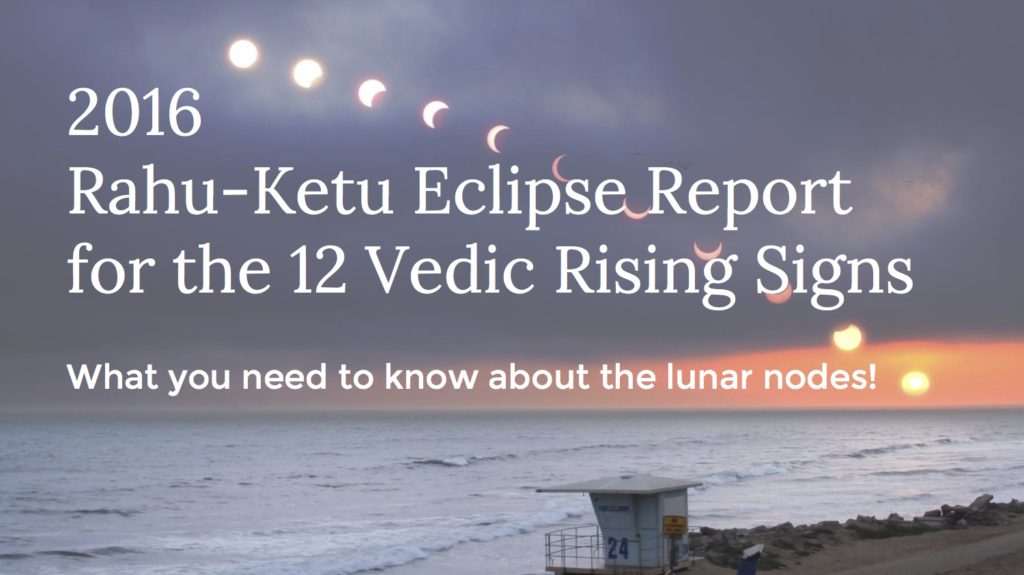
Did you like Harvest Moon and Lunar Eclipse of September 16th? Please Like, Comment, and Share!
Save
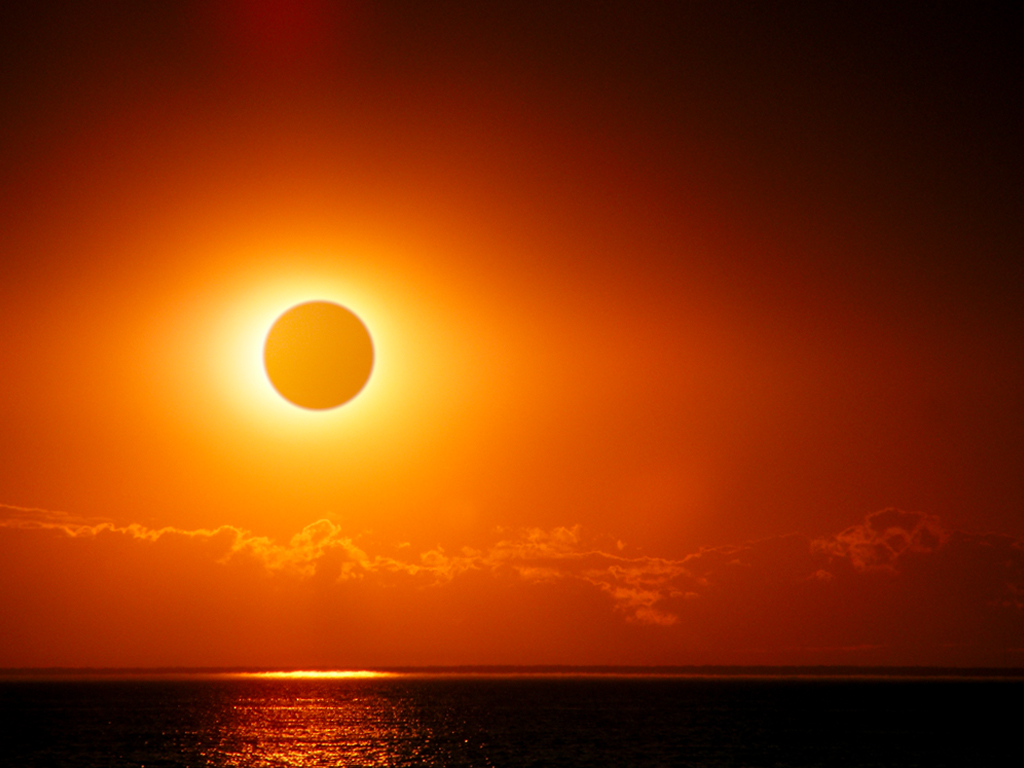
by Somya Devi | Mar 4, 2016 | Astrology, Conjunctions, Eclipses, Events, Holy Days
This coming New Moon on March 8th packs a powerful punch, bringing with it a groundbreaking total solar eclipse. This will be the first in a series of eclipses to occur with the lunar nodes, Rahu and Ketu, on the sidereal Leo-Aquarius axis. The nodes moved into these signs at the end of January and will transit here until August of 2017, affecting us deeply in whatever areas of our lives are influenced in our personal charts. We will experience 3 eclipse cycles (pairs of eclipses, one solar and one lunar) during this transit–one now, one in September, and one in February of 2017. (Don’t miss my Free E-Book with lots of info on this transit and how it will affect your sign!)
This solar eclipse on the New Moon will set the tone for a tumultuous lunar cycle. The New Moon cycle begins at 5:54pm PST on March 8th, in sidereal Aquarius. The total solar eclipse (peaking around the same time) will be visible from Southeast Asia, most of Australia, the South Pacific and Indian Oceans and Hawaii. The effects will be most perceptible in these areas, but everyone will feel the disturbance at some level.
During the eclipse, the Sun’s light will be blocked out as he and the Moon align with Ketu, who casts a shadow of self-doubt and criticism on the planet of vitality. The results will be feelings of confusion and disconnection from our sense of strength, individual power, and our connection with Source (all things represented by the Sun). This is adding to our already diminished sense of personal empowerment that can come while Sun is in Aquarius, the sign of service and humility.
This solar eclipse, as well as the lunar eclipse to follow on March 23rd, will bring up a lot of our personal shadows around the quest for equilibrium between universal service and self-empowerment. This theme will continue through the broader year-and-a-half eclipse cycle we have entered.
At the time of the eclipse, Mercury and Venus join the Sun, Moon, and Ketu in Aquarius. This will add Ketu’s feelings of confusion, doubt, and aversion to our collective emotional body (the Moon), to our intellectual and analytical side (Mercury), and to our desirous, pleasure-seeking nature (Venus).
Don’t be surprised to see a chaotic departure from inner peace, rational thinking, and cooperative behavior around this eclipse.
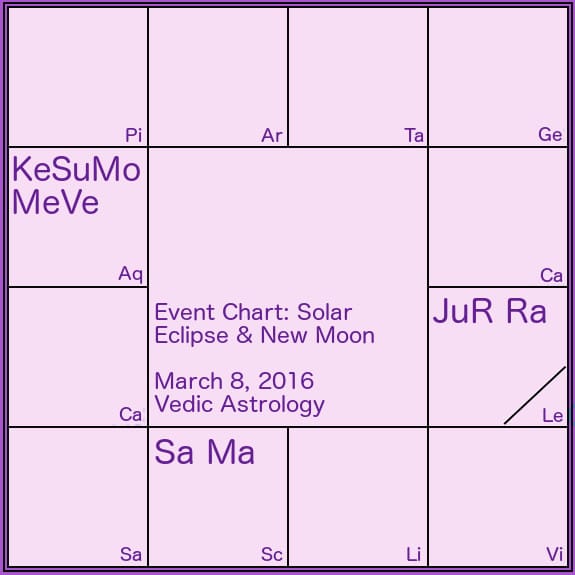 This could be aggravated even more by Jupiter and Rahu, who oppose this New Moon cluster from Leo. Their conjunct energies are causing folks to become more and more amped up and self-righteous over their principles and beliefs. (Polarized election madness!) Saturn aspects the duo from his menacing position, joined Mars, in Scorpio, which puts the pressure on even more.
This could be aggravated even more by Jupiter and Rahu, who oppose this New Moon cluster from Leo. Their conjunct energies are causing folks to become more and more amped up and self-righteous over their principles and beliefs. (Polarized election madness!) Saturn aspects the duo from his menacing position, joined Mars, in Scorpio, which puts the pressure on even more.
Mars casts his aspect onto the stellium in Aquarius. This could throw some fuel on the potentially explosive fire of transformation that is happening there with the eclipse. Mars in Scorpio gives us the chance to bring forth our warrior-like courage, which we will need in facing all of the disturbance and potential change arising.
This eclipse occurs with Sun, Moon and Ketu in the Vedic nakshatra called Purvabhadrapada. This star-sign falls on the constellation well-known as Pegasus (on the stars Alpha-Pegasi and Beta-Pegasi), bridging the Aquarius and Pisces regions of the sky. As such its symbol is a funeral cot, or bed, related to the fire of purification. This helps to prepare us to enter the darkness of the unknown to be met in Pisces.
The eclipse here will drive us strongly towards purification and transformation. This is for our higher purpose and spiritual development, but it may not be without some difficulty. The deity for this nakshatra is Aja-Ekapada (“the one-footed goat”), who is related to Rudra, a destructive aspect of Lord Shiva. This star is associated with darkness and black magic, which lays the groundwork for a very powerful eclipse.
Eclipses are times when we can literally see shadows in the sky, and they are opportunities to see the ugly psychological shadows lurking in our own subconscious. These need to be uncovered and released so we can free ourselves from them. This is a very important time to do sadhana (spiritual practice) and Self-inquiry, so we can know ourselves better and become enlightened by this gift of seeing what is normally in the dark.
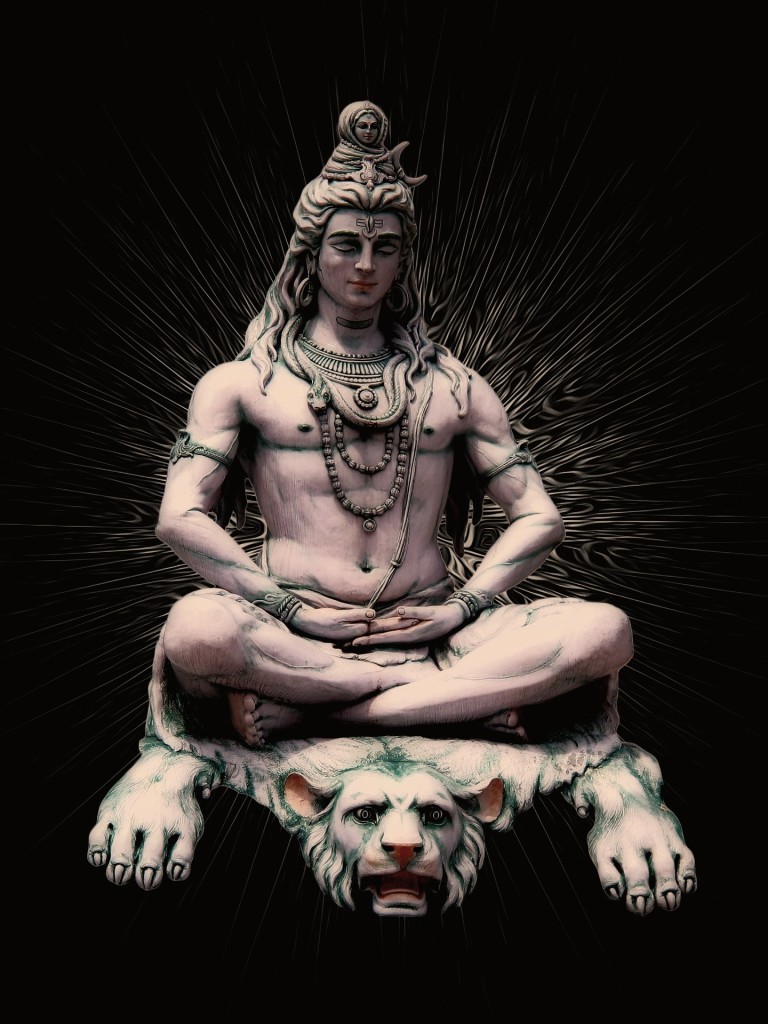 This opportunity is amplified because Sunday night (Pacific, Monday in India) brings the Hindu holy time known as Maha Shivaratri (“the great night of Lord Shiva”). This is the most auspicious night to offer oneself into spiritual practice, in worship of Divine Consciousness. It is typical to stay up all night, fasting and engaging in worship such as mantra, chanting, meditation, and puja. With the eclipse so close at hand, this is an extremely potent time to call upon the light of consciousness and purification.
This opportunity is amplified because Sunday night (Pacific, Monday in India) brings the Hindu holy time known as Maha Shivaratri (“the great night of Lord Shiva”). This is the most auspicious night to offer oneself into spiritual practice, in worship of Divine Consciousness. It is typical to stay up all night, fasting and engaging in worship such as mantra, chanting, meditation, and puja. With the eclipse so close at hand, this is an extremely potent time to call upon the light of consciousness and purification.
In Vedic tradition it is thought that the negative energy of the nodes pervades the atmosphere during the time of the eclipse, and it is therefore best not to eat or drink during this time. (The eclipse window is from 3:19pm to 8:34pm PST.) It is also best to refrain from looking at the eclipse directly, or being outside in its atmosphere, especially if you are somewhere the eclipse will be visible.
One more thing to add to the mix on this powerful New Moon: March 8th is also International Women’s Day! Let’s use this transformative time to honor and elevate the sisters, mothers and daughters of this world!
As a special gift to help you navigate through this time, I’ve put together a Free e-Book on Rahu, Ketu, and the Eclipses for the 12 Vedic Rising Signs , which includes a forecast for your personal sign!
Eclipse periods are some of the best times to book a personal reading to help you to understand your personal karma and to process the energy brought up by the nodes.
Top Image Credit: “Eclipsed? Not totally” by James Jordan, CC license Attribution-NoDerivs 2.0 Generic

 Many blessings for the new year, astrology lovers! This lunar cycle will peak with a full Moon at 17° sidereal Gemini, on January 1st at 6:24 pm PST. On both December 31st and January 1st the Moon will wax into fullness, fully reflecting the light of the Sagittarian Sun onto Earth, as we step into 2018.
Many blessings for the new year, astrology lovers! This lunar cycle will peak with a full Moon at 17° sidereal Gemini, on January 1st at 6:24 pm PST. On both December 31st and January 1st the Moon will wax into fullness, fully reflecting the light of the Sagittarian Sun onto Earth, as we step into 2018. We can still engage in this practice when using the sidereal zodiac with Vedic astrology, because this “star-based” zodiac correlates with what we see in the sky.* Here are some screenshots for January 1st from the astronomy app called SkyView Lite, showing the Moon in sidereal Gemini, and Mars and Jupiter in sidereal Libra, Mercury in sidereal Scorpio, and Saturn, Venus, and the Sun closely joined in sidereal Sagittarius. Gemini is where you will be able to locate the full Moon on January 1st, and these photos show where one would see the other planets if not for the fact that they are currently “up” during the day (early birds might catch Jupiter and Mars).
We can still engage in this practice when using the sidereal zodiac with Vedic astrology, because this “star-based” zodiac correlates with what we see in the sky.* Here are some screenshots for January 1st from the astronomy app called SkyView Lite, showing the Moon in sidereal Gemini, and Mars and Jupiter in sidereal Libra, Mercury in sidereal Scorpio, and Saturn, Venus, and the Sun closely joined in sidereal Sagittarius. Gemini is where you will be able to locate the full Moon on January 1st, and these photos show where one would see the other planets if not for the fact that they are currently “up” during the day (early birds might catch Jupiter and Mars).






 On Shivaratri, it is a common practice to stay up the whole night in meditation, fasting and praying. This commemorates the sacrifice made by Lord Shiva when he kept the poison that arose from the milk ocean in his throat in order to protect the entire creation. In this story, his wife Parvati held his throat to keep him from consuming the poison, and thus this holiday also commemorates the union of masculine and feminine forces, Shakti and Shiva, yin and yang. In many places this is represented by a celebration of Shiva and Parvati’s wedding, and one may see large statues of the two paraded about town and worshiped.
On Shivaratri, it is a common practice to stay up the whole night in meditation, fasting and praying. This commemorates the sacrifice made by Lord Shiva when he kept the poison that arose from the milk ocean in his throat in order to protect the entire creation. In this story, his wife Parvati held his throat to keep him from consuming the poison, and thus this holiday also commemorates the union of masculine and feminine forces, Shakti and Shiva, yin and yang. In many places this is represented by a celebration of Shiva and Parvati’s wedding, and one may see large statues of the two paraded about town and worshiped.







